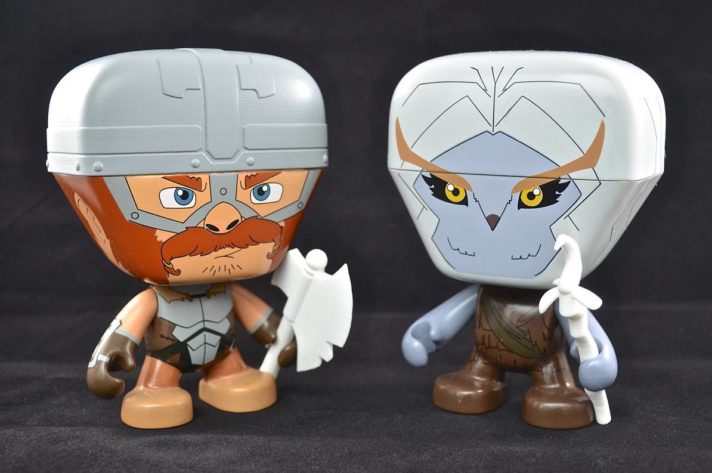
PAX East is a great place to go and see up-and-coming game designers creating innovative products, and it’s no surprise that they’re using Shapeways to prototype their creations. We caught up with James Campbell of Gut Shot Games to talk about his new designer-toy/wargaming combo. Make sure to keep an eye out for his Kickstarter, launching May 23rd.

H.E.A.D Hunters at PAX East
Where did the concept for H.E.A.D Hunters come from?
I had the original concept for what would become H.E.A.D. Hunters way back in 2007. Inspired by a recent boom in connected plush toys and the growing popularity of designer toys, I challenged myself to think of new ways to get people playing with their toys instead of watching them collect dust.
In 2007, rapid prototyping was not as accessible as it is today, so the slightest changes to a design had significant costs in both time and money. Because of this and the accurate feedback from major toy companies that the initial game I designed was not very good, the idea was put on the shelf until the spring of 2015. At the time, I was living in China with my family and with limited TV viewing options, we often turned to tabletop games for entertainment. This newfound love for tabletop games inspired me to pull the project off the shelf and partner with game-design veterans Ben Cichoski and Danny Mandel to get H.E.A.D. Hunters where we are today, just a few weeks away from launching our Kickstarter campaign.

How did you create your (awesome) toys and game components?
When I originally had the idea to create a toy that would hold tabletop game components in its head, I had zero experience with 3D software. At the time, I was lucky enough to find a patient CAD engineer who was able to help me turn my rough sketches into the initial toy designs (image below), and even get me started on learning 3D software on my own.
Since then, my ZBrush skills have certainly improved, but I still felt more comfortable working with a more seasoned toy designer on what would be two major revisions before landing on our current design. Each revision would output an STL file that was the result of dozens of hours of Skype calls and email exchanges. Shapeways allowed us to turn that STL file into something physical we would use in our playtesting.
Once we landed on a final toy platform, we were able to take the prototype with us as we met with toy manufacturers to discuss our manufacturing needs. Once we narrowed down our search, we commissioned them to do painted prototypes to ensure they could match the style we were looking for.

How does 3D printing help indie game designers like Gut Shot Games move through iterations to a final product?
How components work together with game mechanics is crucial to the game design process and ultimately the end product. What would seem to be a simple element, like the battle platforms our toys stand on, would actually take four different rounds of prototypes before we had something that would meet all our needs. This process of iteration can raise issues you may have overlooked, such as stability in our initial platform design, and provide potential hidden benefits, such as improved transparency into our current design.

Current H.E.A.D. Hunters with prototype weapons in Shapeways white Strong & Flexible nylon plastic
What do you plan to 3D print next?
Tools of the trade are important in any profession, especially for hunters! As such, we are currently finishing up designs for weapons for all 10 of our H.E.A.D. Hunters. To ensure each weapon complements its owner’s style and personality, we will be turning to Shapeways as we model, print and continue to fine-tune these designs over the coming weeks.


